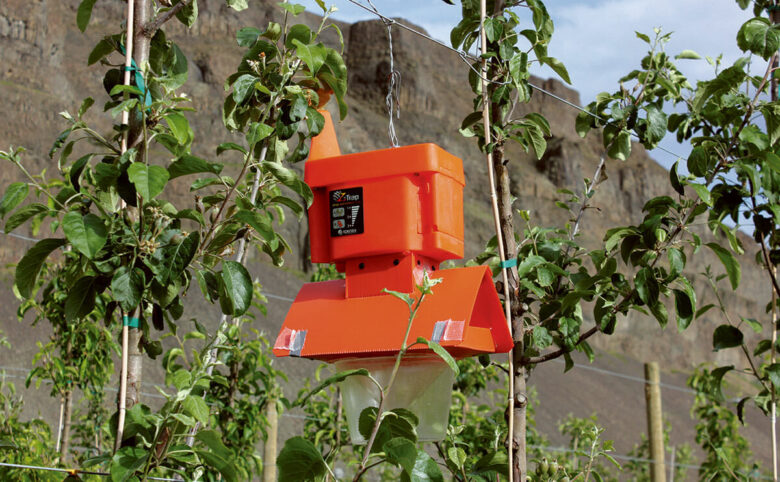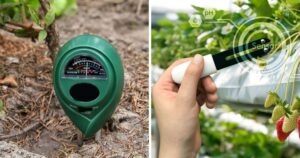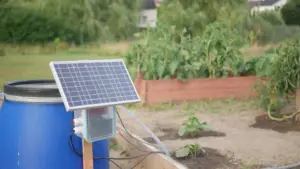Technology has become a powerful partner in the never-ending battle against household pests. Traditional methods of pest eradication sometimes work, but they often involve chemicals that are harmful to both people and the planet. Welcome to the age of smart pest control equipment, a new way to eliminate pests that uses technology to spot them, chase them away and kill them in a way that is gentler, less harmful to animals and better for people. environment. This article provides an in-depth look at smart pest control devices, including the different types, their benefits, and the creative ways they can change the way pests are managed.
1. Learn more About Smart Pest Control Devices:
Smart pest control tools are part of a larger trend in smart home technology designed to adapt to our always-connected lives. These gadgets use various technologies, such as ultrasound, Wi-Fi connectivity and sensor detection, to repel and eliminate pests without the use of chemical methods. With smart gadgets, you can eliminate rodents, insects and other unwanted visitors in a targeted manner.
2. Different Types of Smart Pest Control Devices:
Ultrasonic Pest Repellers: These devices emit high-frequency sound waves that are inaudible to people and pets, but are highly annoying to rodents, mice and some insects, causing them to leave the area.
Smart Traps: Smart Traps use Wi-Fi to notify you right on your smartphone that they have caught an infestation so you can eliminate it immediately. Some models also provide useful information about pest behaviour.
Insect Zappers: If you want to get rid of flying insects, you can use modern insect killers that use UV light and electric grilles. Smart versions can be set and controlled via apps, which determine the best working times based on when the insects are most active.
Attached Bait Stations: These are primarily used to remove rodents. They have an app that lets homeowners or pest controllers know when bait has been eaten, so they can monitor the situation and quickly replenish their supply stations.
Smart Repellents: These devices cover an area with repellent chemicals or natural repellents and work by spreading heat. The online functionality allows you to set up a schedule and carry out transactions remotely.
3. Benefits of Smart Pest Control Devices:
Non-Toxic: Most smart pest control equipment eliminates or significantly reduces the need for chemical pesticides, making it a safer choice for homes and pets.
Efficient Monitoring: Instant alerts and record keeping make it easier for homeowners to keep an eye on pest activity and take quick action when necessary.
Convenience: Many smart devices do not require much maintenance after installation. Smartphone apps make things easier by allowing you to manage and organise things remotely.
Environmentally Friendly: Smart pest control devices help protect the environment by reducing the use of chemicals.
4. How to Choose the Best Smart Pest Control Equipment:
Choosing the right gadget depends on many factors, such as the type of pests, the size of your home, and safety concerns such as pets and children. It’s also important to consider how it will work with other smart home systems.
5. Integrate with the Smart Home Ecosystem:
Smart pest control devices can reach their full potential when connected to a larger network of smart home devices. This integration allows everything to work together, such as using outdoor lights to turn on pesticides or sounding alarms when pests are detected, making the entire home safer and more comfortable.
6. Questions and Things to Think About:
There are many benefits to smart pest control gadgets, but there are also some things you need to think about. The initial installation costs can be high and depending on the complexity of the system, this may need to be done by a professional. Some technologies, such as ultrasonic pest repellers, can also be more or less effective depending on the environment and the type of pest.
7. What’s Next in Pest Control:
As technology advances, we expect to see more creative, smart pest control solutions. For example, AI-driven recognition and more advanced interactions with home automation systems are just a few examples. Approaches that put human and environmental health first may gain increasing attention, pushing the boundaries of pest management.
Summary:
Using smart pest control equipment is a big step forward in our efforts to eradicate pests. By combining the concepts of integrated pest management with the latest technology, these devices offer a promising way to rid homes of pests without sacrificing safety or the environment. As we continue to adopt smart home technology, adding smart pest control to our homes not only makes us feel better and aligns with our larger goals of protecting the environment, but it also makes sense. Pest control is changing and the future looks very bright.
FAQs:
Q: How do smart pest control devices differ from traditional pest control methods?
Ans: Smart pest control equipment uses advanced technology to prevent, detect and eliminate pests without the use of chemical pesticides. They provide a non-toxic, environmentally friendly alternative and can be controlled and monitored via a smartphone app, making them more efficient and convenient than traditional methods.
Q: Are ultrasonic pest repellers effective against all types of pests?
Ans: Ultrasonic repellents are generally effective against rodents and certain types of insects. However, its effectiveness can vary depending on the specific pest species, home layout and environmental factors. Over time, some pests can become common with ultrasound, reducing the effectiveness of the device.
Q: Can smart pest control devices be integrated into existing smart home systems?
Ans: Yes, many smart pest control devices can be integrated into existing smart home systems. This enables coordinated actions through a single platform as part of the wider home automation ecosystem, improving the convenience and efficiency of pest control.
Q: What should you pay attention to when choosing smart pest control equipment?
Ans: When choosing a smart pest control device, consider the specific types of pests you want to deal with, the size of the area you need to cover, the safety of children and pets, and whether the device can be integrated into your existing smart home system. In addition, the maintenance requirements and costs of the equipment must also be taken into account.
Q: Are there environmental benefits to using smart pest control equipment?
Ans: Yes, smart pest control equipment has several environmental benefits. They can minimize soil and water pollution by reducing or eliminating the need for chemical pesticides. Additionally, smart devices that use physical methods to control pests, such as traps, are more durable and reduce the risk of harm to non-target species compared to broad-spectrum chemical treatments.



